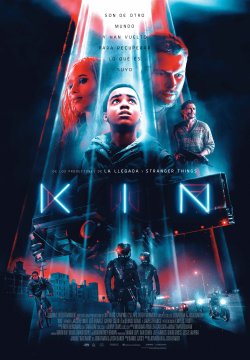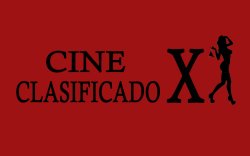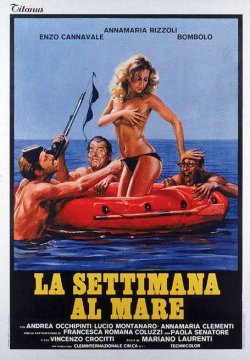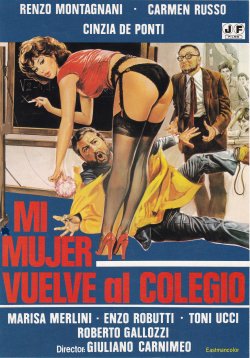 |
|
SINOPSIS
Perseguidos por un criminal vengativo, los federales y una banda de soldados de otro mundo, un exconvicto recientemente liberado y su hermano adolescente adoptado se ven obligados a ir a la guerra con un arma de origen misterioso y su única protección...
INTÉRPRETES
ZOË KRAVITZ, JAMES FRANCO, DENNIS QUAID, CARRIE COON, JACK REYNOR, GAVIN FOX, BREE WASYLENKO, JOHANTHAN CHERRY, MYLES TRUITT, ROMANO ORZARI, IAN MATTHEWS, LILY GAO, SHAWN J. HAMILTON, CARLEIGH BEVERLY, IVAN SHERRY
MÁS INFORMACIÓN DE INTERÉS
![]() CÓMO SE HIZO
CÓMO SE HIZO
![]() VIDEO ENTREVISTAS
VIDEO ENTREVISTAS
![]() PREMIERE
PREMIERE
MÁS DATOS...
 INFORMACIÓN EXCLUSIVA
INFORMACIÓN EXCLUSIVA
ABOUT THE PRODUCTION...
Filmmakers Jonathan and Josh Baker make their feature directorial debut with “Kin,” which is based on their acclaimed short film, “Bag Man.” The SXSW Grand Jury Award-nominated short tells the story of an African-American teen who journeys out of his rough New York City neighborhood to the countryside with a mysterious duffle bag, later revealed to contain a futuristic weapon.
The Bakers had been living in New York, earning their keep in the advertising world, when they decided to expand their horizons by making a short film. “It was a great way of just playing with a longer sort of narrative than we were used to doing at the time,” says Jonathan Baker. “It was a cleanser of sorts, allowing us to show more of a dramatic side as directors.”
Josh Baker adds, “We didn’t make the short film just to get a feature made. It was for the love of that story of someone unexpected getting their hands on something really crazy and powerful, and how does that play out?” “And then,” notes Jonathan, “we saw something bigger in it.” That something bigger was a feature-length story that was worth telling to the brothers. Says Josh, “From the short, the main elements were the boy, the bag, and the weapon, and we wanted to keep those, but really, we wanted to tell a story about family. About brothers.”
When the Bakers took the concept of expanding their narrative into a feature sci-fi thriller to producer Dan Cohen at 21 Laps Entertainment (“Stranger Things,” “Arrival”), Cohen was intrigued.
“I had actually known of their commercial work and it was really powerful and obviously the short combined with their vision, it gave us kind of full comprehension of what they wanted the feature to be,” says Cohen.
Prior to “Bag Man,” the Bakers had filmed two other smaller shorts, but primarily made names for themselves as commercial directors for such acclaimed brands as Nike, Google, Beats by Dre, HP and Sony. “They are ‘first time directors,’ but they’re directing like it’s their tenth movie,” Cohen notes. “They’ve spent so much time making commercials and honing in on their craft and the specificity of their vision. And, this is such a uniquely personal story to them about brothers, which obviously they are, but also it really comes from their evolving aesthetic.”
21 Laps founder Shawn Levy says the difference with the Bakers as it relates to commercial directors making the leap into features, is that the confidence they exuded went beyond what the visuals would entail. “The Bakers impressed me with their instincts regarding how this beautiful short film would adapt and need to change as it evolved into a feature film,” says Levy. “You know that in general a commercial director is going to bring a visual confidence and facility, but that is not at all the same thing as storytelling in a long form narrative. And their storytelling sense was always very strong.”
The project was enticing enough to attract actor Michael B. Jordan as an executive producer as well. Jordan had seen “Bag Man” early on, and was interested in seeing the Bakers make their feature debut happen, “I love stories where you just don’t know where it’s going to go, and you end up in this beautiful place, thinking, ‘Wow, how did I get here?” says Jordan. “That’s what really captured me about it. I said, ‘With a budget and the right situation, these guys could probably make some noise.’ It was all of the above that made me want to be involved.”
Seeking out a writer to turn their expanded concept into a filmable screenplay led the brothers to Daniel Casey. There was an instant connection in that the Bakers envisioned moving the first half of the story to Detroit, and Casey happened to be from there. “It was meant to be,” says Jonathan Baker.
“’Kin’ is definitely a coming-of-age story,” says Casey. “Obviously for the main character, Eli, but it’s also a coming-of-age story for Jimmy, his older brother. The movie is called Kin, because this is a story specifically about family and family relationships. The further we got along into developing the script and making the film, the more we realized that our story featured so many intersections of people just kind of searching for family, or trying to get along with family.”
Those elements provided a framework that underscored to the filmmaking team that “Kin” was something that could stand on its own as a compelling narrative even without its sci-fi details. Says Casey, “That was a goal we all adopted as we went along, the idea to tell a story that took place in and around this family that was breaking up, that had demons, and to just kind of live with these characters as human beings rather than having to talk about spaceships. As long as your characters are working, as long as they have real emotional wants and needs, I think you wind up with a good movie first, and then the science fiction components you add on top of that to help elevate it into something distinct. The human story was always top priority.”
Jonathan Baker notes that it was his and Josh’s wide-ranging tastes in film that led them to think of “Kin” as a grounded sci-fi. “We prefer stories that have some texture to them, that have a sense of grit” he says. “I think that character-driven, grounded sort of tone is what we really wanted this sci-fi movie to be.”
That specificity of vision as the Bakers went into production was another impressive aspect of the brothers, Cohen says. “It was not a surprise to me the second we started production or even in seeing them through prep that they knew exactly what they wanted,” he says. “And they can dictate that perfectly from specifying the design of the futuristic weapon to fashion design to what rings true and what doesn’t in terms of the visuals of a scene, let alone performance. They have a 360-degree awareness of what they want and how to get it. It’s completely rare for a filmmaker, and almost unheard of for first-timers.”
THE LOOK OF KIN: THE IMAGERY...
Despite “Kin” being a thrilling end-of-summer genre movie, at its heart you’ll find a subtle character-driven family drama. The Baker Brothers knew that the photography had to speak to this level of rawness and reality, and not get too caught up in a detached glossy veneer.
“The modern sci-fi films we relate to are ones that always choose emotional connection over spectacle”, Josh says. “A natural subdued approach to the photography is a big part of that”.
Director of photography Larkin Seiple has been shooting with the brothers for years now, but only on commercials. When it came time to partner with a DP for “Kin,” it only felt right to take their collaboration to the next level. “Advertising is the perfect playground to develop your visual style together, and learn how each of us likes to work”, says Jonathan. “Having that prior experience and a shorthand together was essential to getting the most out of the prep and shoot”.
Larkin and the brothers spoke at length about the way the film should look, and the type of audience they wanted it to appeal to. “The Baker Brothers have a real eye at finding honest yet provocative imagery”, says Larkin. “In prepping the film we discussed how to make a big film feel both intimate and exciting at the same time. We ultimately settled on the idea of creating ‘handmade’ feeling imagery over ‘factory made’. There needed to be that human touch on everything. We eschewed the normal lighting choices and tried to light environments instead of people, all while focusing on what made each scene personal and fragile”.
A word that was spoken constantly through prep, shoot and post by Larkin and the Brothers was ‘texture’. Every environment needed to feel lived in and used. The lighting motivated and practical. The image grainy and alive. A gritty reality, often seen in smaller budget crime dramas, is what was going to bring the humanity to this sci-fi story.
“With such an extraordinary story, the brothers also wanted to keep the cameras grounded, so the audience could fully relate to Eli and his journey”, says Larkin. “We opted to keep the camera predominantly handheld and loose, finding its subjects naturally”. “The final outcome is something quite special”, says Josh. “An audience has never experienced a hero’s journey like this before, and the fact that “Kin“ is a hard movie to place in a simple box is a delight to us”.
THE LOOK OF KIN: ON THE ROAD...
Though predominantly a road movie, the production required multiple exteriors and interiors across several states, a daunting task for production designer Ethan Tobman. “There are more than 75 locations, and we’re portraying multiple climates, mostly in Toronto,” Tobman says. “We have 15 builds from scratch, but dozens of other locations that were heavily modified.”
Tobman cites a major scene that takes place in what’s supposed to be a functioning casino. “The casino is something that just flew by on the page. It’s two or three pages of script, but [the set] was an extraordinarily detailed one requiring an army of labor,” he says. "What's fun about that one is you're building it from the ground up, but it's not one of the glitzy casinos we see so often in films. This one's off the beaten track, but still within earshot of the main strip, a sad 'second to last stop' for so many people right before they bottom out right, just like for our characters. Anyone who has been just off the Vegas glitz strip knows how those places are a dangling carrot above a sad, lonely darkness, and getting that detail right was a big challenge at wintertime in a Canadian city."
Another design element Tobman needed to keep in mind when creating the sets was that many of them, including the bar where the boys meet Milly, get blown apart by Eli’s futuristic weapon. “Special effects and I worked really closely together when I was designing a space, with the target of how we intended for something to be destroyed,” he states. “In this particular movie, we had many discussions and did a lot of research about what the destruction of our weapon does, how it would affect certain materials, while obliterating others. For example, does it melt glass, or break it? Or does glass just blow out in proximity through sound? The weapon has different modes, which we learn about through its destruction. So in a way, you're first designing a space in reverse from its intended destruction, then redesigning it forwards to take place in reality. We shot some of the elements separately where real cinder blocks or real wood are being torn through without actors present, and used safe artificial elements for when they weren't.
The Detroit neighborhood in which Eli lives with Hal was shot in the city of Hamilton, which is forty-five minutes west from downtown Toronto. “It looks like it; it feels like it,” Tobman notes. “People dress similarly to the Detroit locals. In many ways, it’s a city that has gentrified pockets but also pockes that have been forgotten and are crumbling.”
Stylistically, the filmmakers wanted to set a dark tone representing a “vanishing America,” according to Tobman. “From the moment I read the script, my feeling was that this was a film about an America that is no longer. I walked into our first meeting on production design wanting to represent that, and the directors had the same instincts. We have a road movie taking place in an America that's no longer driven by the dream of white picket-fences that starts in a gorgeous but crumbling city that is a symbol of America's ultimate shame, of stunning corruption and industrial failure. And then while we're making the movie, the election is in full swing south of the border, and there's so much talk in the news of main street and of traditional values.
I think in many ways this is a movie that explores how maybe there is no more main street, that there's nowhere safe or familiar anymore. Eli is part of a generation that, maybe for the first time, can't assume it will do better than it's parents did, how maybe now that's statistically over. And we wanted to use that landscape to heighten his anxiety, his reliance on this weapons unknown, terrifying power, and to a future that’s scary, unknown. That's why I make movies, that's how I approach designing them. They're all about exploring giant ideas on space and time through one person's tiny story."
THE LOOK OF KIN: THE WEAPON...
For the filmmakers, “Kin” is in some respects a twist on a classic tale. “This movie was our version of the Sword in the Stone fable,” says Josh Baker. His brother Jonathan adds, “It’s about a boy whose experienced loss and is drawn to something that only he can hold and ultimately wield. This is the sci-fi version of a very familiar tale. Only here we have a 14-year-old boy holding an alien weapon.”
Screenwriter Dan Casey says, “The thing that’s most important for the story is that the weapon represents unknown possibilities. You don’t really know what the weapon can do when you first find it, and the mystery of that carries us into the second half of the film.”
Of course, that meant a laser-like focus on making sure the weapon was its own distinct character. Because the weapon Eli finds in “Kin” is similar to the one used by the boy featured in the Bakers’ short “Bag Man,” the directors already had a prototype in mind for the feature production.
“[The Bakers] have a super strong design background,” says production designer Ethan Tobman. “They have a background in graphic design, they’re huge sci-fi fans. They’ve seen every sci-fi movie and studied every sci-fi weapon, so they’d been toying around with the design for quite a while. We referenced weird movies 80's kids saw opening night and obsessed over, the sci fi anxiety those directors mined from a uniquely adolescent perspective informed by that decade’s politics and fears. Preproduction with the Bakers was like having a class sleepover where you keep trying to up each other’s game, geek out till the sun comes up."
Says Josh Baker, “We wanted to use a similar design as the weapon from ‘Bag Man’, but take it a little further, sweeten it up a touch. It’s a little slicker, the lines a little curvier, kind of sexier. It was all about how the light bounced off this thing so that when you actually built it, it felt like real heavy machinery with a past and a story to tell. I think it was really important for Myles [Truitt] to have something real in his hands, without leaning on visual effects. A prop that had some weight to it, and that was actually a struggle for him to hold. Eli’s complex relationship with this weapon was so important”.
According to prop master Mike Genereux, the actors worked with a weapon that offered practical applications. “There are two physical modes that we’ve created,” he says. “The rest is going to be CGI-applied and added during post production. So we really don’t see how it looks until it’s edited together.”
Myles Truitt admits he enjoyed playing with the futuristic weapon on set, both as Eli and as a regular kid with a nifty new toy. “When I turn it on, it switches on all these lights and stuff, and I’m looking at it like, ‘Man, this is real cool,’” he expresses. “But it’s big, and I don’t know, like ten pounds, so it’s pretty heavy.”
KIN-ETIC STUNTS...
When veteran stunt coordinator Jamie Jones read the script for “Kin,” he enthusiastically declares that he was “pumped.”
“I couldn’t believe it was full of so many cool stunts,” he says. “There is everything from cars to motorcycles to fights. I mean the explosions and the things we’re doing with this weapon are amazing!”
Jones is particularly impressed with the film’s practical realism. “I think the main thing with this film, compared to a lot of movies we see, is the realism,” he says. It’s more like raw stunts as opposed to visual effects.”
Jones discusses one exciting scene involving Ducati motorcycles on a highway. “It’s The Cleaners on two motorcycles going somewhere quickly through traffic,” he explains. “So, we had twenty-five cars out on a huge highway that we locked up … three kilometers of highway. And these bikes were actually going at high speed, at one point 220 kilometers an hour, through traffic. So, the reason it’s going to look fast is because it was. It’s real, which just makes it look that much better. And we used Moto Cam that was both leading and chasing, following with these motorcycles weaving through traffic and it was amazing. “
Myles Truitt says he got to do a few of his own stunts, but his favorite was driving a car. “I got to do donuts, like, by myself. I had to turn the wheel all the way to the left and just gas it. We went around in circles. That was the most fun thing ever,” he exclaims.
When it comes to stunts, it’s all relative, says Zoë Kravitz, who found herself in the exhilarating position of doing something on film she never does in real life. “I peeled out of a parking lot,” she says. “It’s not really a stunt, but for someone that doesn’t drive, it becomes a stunt. You know what I’m saying?”
THE LOOK OF KIN: COSTUMES...
Costume designer Lea Carlson says that dressing the main characters in the film required her to think “naturalistic” and “understated,” particularly for Eli and Hal. “Eli’s living with this dad who probably doesn’t like to spend a whole lot of money,” she observes. “He’s very pragmatic, so Eli’s probably wearing hand-me-downs and things from a thrift store.”
However, designing a look for The Cleaners – mysterious enforcers from another world – required a different way of thinking. “The Cleaners were certainly a big thing, I remember wondering if they were a product of [Eli’s] imagination, some apparition based on characters that he had seen in a video game” she says.
Carlson says that The Cleaners were pre-visualized by a concept artist in collaboration with the Bakers before she actually started. Carlson collaborated with the special effects builders that made the mechanical armor with pieces with regards to practical and functional aspects that had to do with an actor movement and comfort and designed the non-mechanical parts including the base and outer layers.
Jonathan Baker says that in designing The Cleaners’ helmets, they were looking for what would look formidable if you saw them zooming past you on the highway. Sci-fi, but not too futuristic. “We created these intimidating helmets that had very dark visors,” he says. “We had to cut holes in them for air so that they wouldn’t fog up, because the actors inside couldn’t see much of what they were doing, especially while driving.”
THE SOUND OF KIN...
Even during development on the film, the Baker Brothers knew they wanted “Kin” to sound as unique as it looked. They worked again with Joseph Fraioli, supervising sound designer on “Bag Man” and sound designer/supervising sound editor on “Kin,” to evolve the sounds of the weapon and bring a sense of humanity to the connection Eli has with the device. “It’s easy to lean on clichés when dealing with sci-fi subject matter, and we wanted to stand apart from the giant robot summer movies we’re all used to experiencing”, adds Joseph. “The brothers brought me on early during script stage to start experimenting with the way the weapon could sound. We decided the technology would be based around magnetism, and introduced that concept subtly through the way it moved, fired and even attached to The Cleaners’ armor.” Adds Jonathan, “The weapon was basically the co-star, and so needed its own unique voice and vocalizations. Iconic sounds that would stay with you, like the classic weapons from science fiction movies from your childhood”.
When it came to the score, Jonathan and Josh were adamant about pursuing an unconventional composer for “Kin.” Even before the script was complete, they started compiling music for the different emotions in the story – a 13 hour playlist that was shared with screenwriter Daniel Casey. “Getting on the same page tonally is so important when developing a movie,” says Josh Baker. “We found that a large percentage of the music we were gravitating towards was by one of our favorite bands, the Scottish foursome, Mogwai,” adds Jonathan. “And so we just asked them. Sometimes it’s as simple as that.”
The band, who had previous experience composing for a French TV series and a few documentaries, had never scored a feature film. “We were really excited to be asked to record the original score for Jonathan and Josh Baker’s debut movie,” says guitarist Stuart Braithwaite. “It was amazing to do a project that was so different to anything we’ve done before and see how our music fits in a totally different environment to how it’s been used before”.
KIN-ECTING WITH AUDIENCES...
Everyone involved with the production agrees that after seeing “Kin,” audiences will come away feeling they’ve seen more than just a thrill ride. “You’re getting multiple flavors in one dish,” says Josh Baker. “There’s a suspenseful crime element, there’s family drama, you’re going to get visual sci-fi, and big stuff mixed with an indie sensibility. We think all of those things combined is what makes ‘Kin’ unique."
Adds Jonathan, “At its heart, ‘Kin’ is a wish-fulfillment movie. It’s about a young character who finds something otherworldly beyond his wildest imagination, his wildest dreams. But then has to decide how he’s going to use it, and whether his actions are at heart good or something more sinister.”
“It’s a fun trip,” says Jeff Arkuss. “You get to live with two brothers who meet really for the first time. I think you’ll feel emotionally engaged in the familial aspect of their story. When you combine that with an exciting and fresh science fiction story - from the weapon, to The Cleaners, to ways in which they travel - this becomes something you’ve never seen before.”
Jack Reynor sees a movie that will affect audiences’ hearts and minds. “It’s got all these great, blockbuster elements, yet at the same time, I hope that it’s going to be stimulating for people in an intellectual way. Hopefully, it’ll make them think about family.”
Shawn Levy is proud that “Kin” establishes something fresh in an increasingly adaptation-heavy landscape. “It’s actually an original film based on no pre-existing comic book or title,” says Levy. “It’s the vision and voice of some new storytellers who had this world in their head, who had this population of characters in their heart.” He continues, “It’s fun, it’s action-packed, it has visuals that I’ve literally never seen in a movie, and I’m extra proud. It looks rad, it feels cool, it has characters that you root for, and it’s as satisfying to the heart as it is to the eye and to the mind.”
 GALERÍA DE FOTOS
GALERÍA DE FOTOS
https://cineymax.es/estrenos/fichas/110-k/122714-kin-2018#sigProId738db102fe












